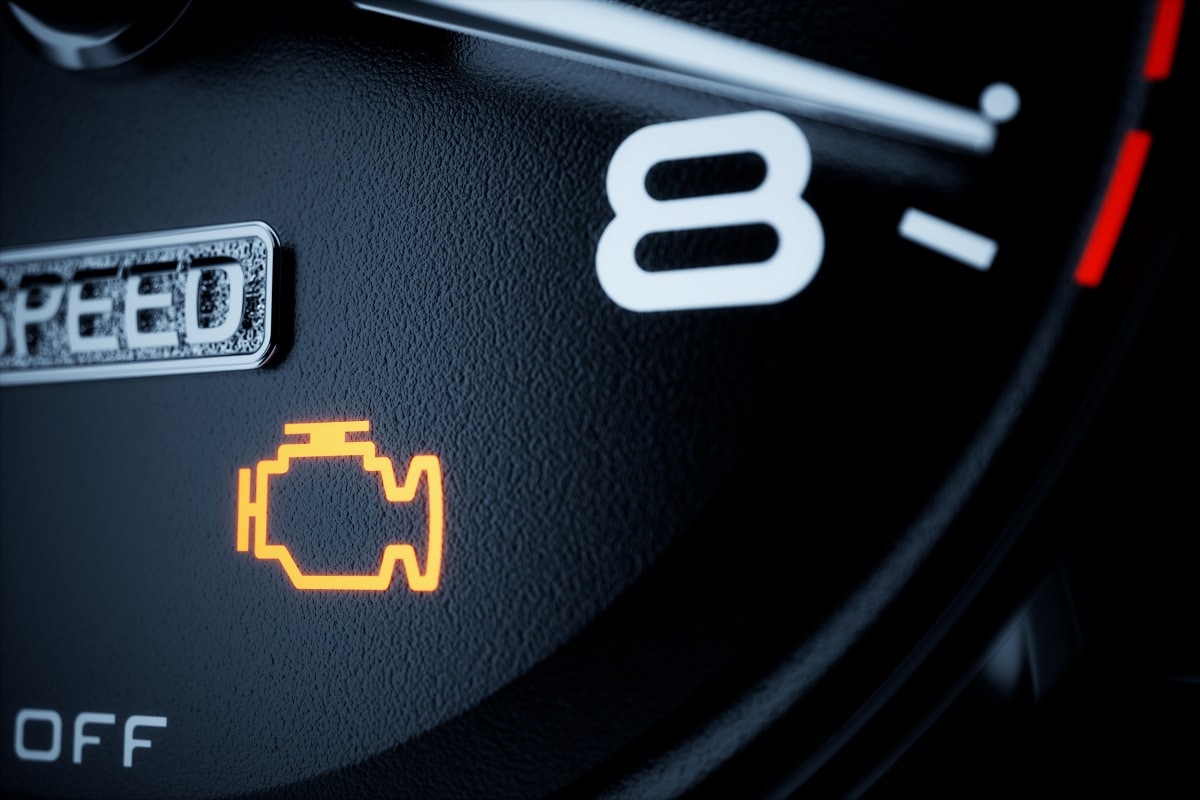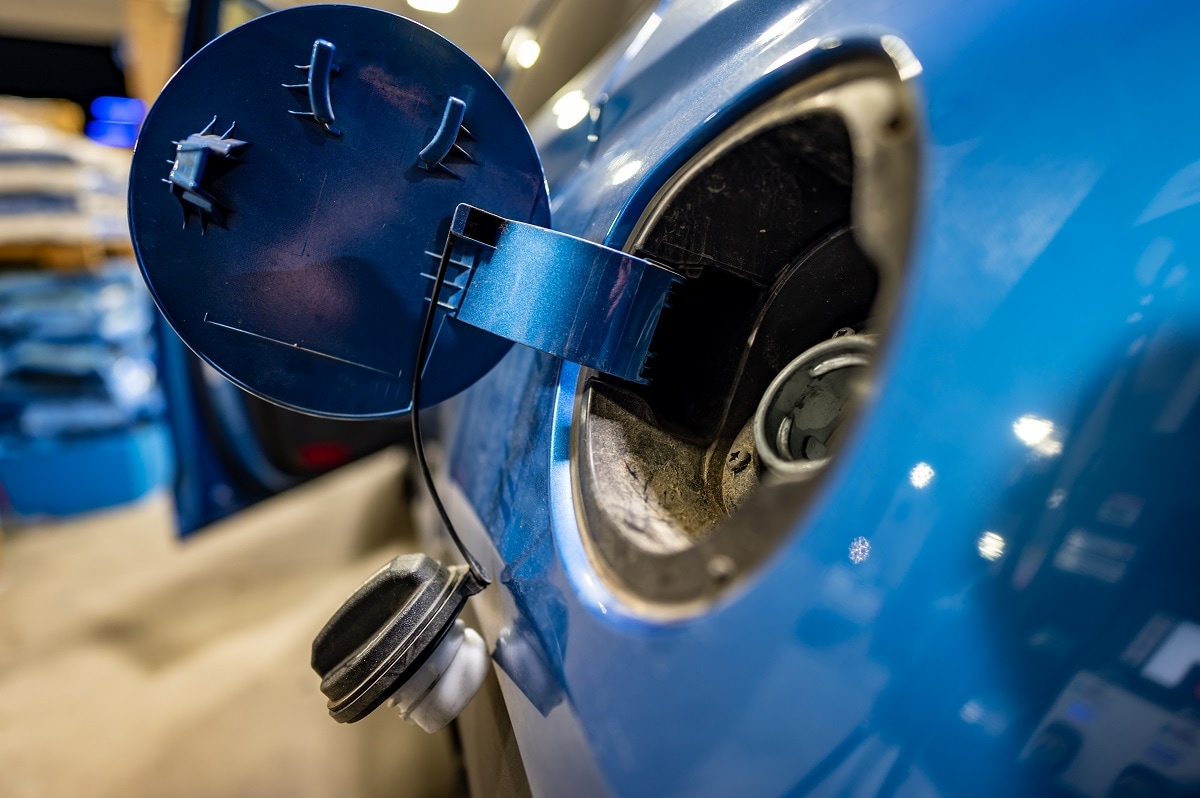
Did you know that a typical vehicle is comprised of over 20,000 auto parts and components, many of which are essential for normal operation? When a dashboard warning sign, such as a check engine light (CEL), turns on, it could mean any one of those thousands of components have failed. But which one?
If you notice a check engine error in your driver instrument panel, don't procrastinate or put off a trip to your auto mechanic or dealership service center. You'll want to get to the root of the problem before things really escalate.
Here are 11 of the most frequent causes of vehicle check engine warnings.
1. Loose Gas Cap

The #1 reason (or the easiest issue to check for, at least) a check engine light may come on isn't due to a faulty part or malfunctioning component – it's your fuel cap.
Valves and sensors in your gas tank circulate and monitor the movement of fuel vapors, preventing them from escaping. If you don't tighten your gas cap all the way, or if you accidentally leave it open after filling up, the sensors will quickly trigger a dashboard warning sign, usually after just a few miles of driving. After tightening the fuel tank cap fully, that dash warning should go away within a few miles or drive cycles.
Other related issues that could set off a vehicle's engine warning light include leaks in your gas fill hose, a faulty gas pump seal or gas cap seal, damaged valve vents and O-rings on the injectors or valves, or a defective gas tank sensor. Either way, make a trip to a service center or auto mechanic near you if the check engine dashboard light stays on.
Fuel cap damaged or missing? Most auto parts stores near you carry replacements, or you can also order one from your car dealer. They're affordable and easy to install!
2. Oxygen (O2) Sensor Failure
O2 sensors measure the unburnt oxygen in your vehicle's exhaust system. That data is interpreted by your vehicle's onboard computer system, which then adjusts the level of O2 and fuel vapors that enter your car's engine. If that oxygen sensor fails, dashboard engine signs will usually come on.
A vehicle can operate with a faulty O2 oxygen sensor, though it will burn through fuel much faster than normal and may damage other essential components, like catalytic converters (see below), spark plugs and other emissions control features.
Luckily, if caught early, replacement O2 sensors can remedy the problem before any long-term damage can occur. New sensors for car O2 are affordable, too, depending on your vehicle's make and model.
3. Catalytic Converter Malfunction (or Missing)
The main role of your vehicle's catalytic converter is to filter your exhaust's carbon monoxide and carbon dioxide, among other gases, which translates to cleaner air, a cleaner car, and better fuel economy. (Read more tips on how to boost your MPG.)
However, like all things in life, they don't last forever. When a catalytic converter fails, your vehicle will definitely let you know... if you pay attention to the signs:
- Overheating engine
- Poor fuel economy
- Loud rumbling noises
- Sluggish acceleration
- Exhaust smells (sulfur)
- Dark exhaust smoke
While vehicles can technically run without catalytic converters, they won't last very long before major engine problems surface. If your catalytic converter was stolen, visit an auto service center near you to get it replaced! (It's also the law!)
A failing cat converter might be caused by misfiring spark plugs (more on that later), a failed O2 sensor, fuel contaminants, leaking engine coolant, faulty cylinder head gaskets, and more. You'll need an experienced automotive technician to help you diagnose and repair the underlying car problems.
4. Dirty or Faulty Spark Plugs & Ignition Coils

Ignition coils and spark plugs work together to ignite fuel and oxygen vapors and start your vehicle's engine. Without them, your car won't turn over; if you've got a fouled plug or a damaged coil pack, or bad wire transfers, your car may still turn over, but it'll almost always trigger a check engine light and continued engine misfires. Left untreated, the problems may cascade to other coils or plugs.
Replacement car spark plugs and ignition coils are relatively inexpensive, though the best solution is to go to your auto service center and keep up with your manufacturer-recommended maintenance schedule. The newest Hyundai Santa Fe models, for instance, suggest replacing spark plugs every 96,000 miles. Check your owner's manual or speak with your car dealership's service center for more details.
5. Failing Mass Airflow Sensor
Your mass airflow sensor (MAS or MAF) determines how much air is needed to start the engine and keep it running. These MAF sensors can get dirty easily, so a thorough cleaning might solve your CEL. But if that doesn't fix it, the air-to-fuel ratio may still be off, necessitating an MAS replacement.
6. Exhaust Gas Recirculation Failure
If you haven't picked up on the trend yet, most CEL errors relate to your exhaust system in some way, shape or form. Your car's exhaust gas recirculation (EGR) valve is one of those components that will set off a check engine light if damaged. This system keeps your vehicle running efficiently by reducing certain types of pollutants and gas (namely nitrogen oxide) from running through your combustion chambers.
EGR valves are notorious for their ability to get clogged. These can be removed and cleaned easily enough, however, which makes repairs much cheaper if caught in time. But if that EGR needs to be removed and replaced, you'll be happy to know that new valves are typically affordable.
7. Vacuum Leak
Car hoses dry out, crack and deteriorate over time. This is exacerbated when exposed to extreme temperatures and conditions. If your vehicle's vacuum system has one of these damaged hoses, you may notice symptoms such as poor performance when idling or operating at high rpm.
In addition to vacuum hoses, cracked fittings, rings, connections and valves may also cause similar symptoms.
8. Bad Thermostat
Did you know that your car has a thermostat, just like your home? Well, not just like your home; you can't set the temperature of your vehicle's internal systems, but it does regulate a radiator's recirculated coolant levels automatically.
When that thermostat feels under the weather, contaminants can enter your coolant and lead to an overheated engine. Coolant leaks can also lead to engine overheating, which will sometimes result in a CEL on your dashboard.
9. Failing Alarm System
Aftermarket vehicle alarm or security systems can sometimes fail—this is usually caused by improper wiring or DIY installation—which can evolve into a wide range of problems, many of which involve a drained battery. Always hire a competent automotive technician, one who's trained in car alarm system installations, to work on your vehicle.
10. Bad Wiring
Any corrosion or loose wires, especially those connected to spark plugs, ignition coils or an exhaust system, can cause a check engine light. Diagnosing the culprit will require an experienced technician or mechanic, an OBD II tool and a good deal of patience.
11. Wrong Gas

Check engine lights will sometimes come on if you've filled up the gas tank with the wrong type of fuel. For instance, if you pump E85 in a vehicle that runs on regular unleaded, we'd bet a dashboard warning CEL will click on until all that fuel has evaporated.
Accidentally fill up your car with the wrong, non-diesel fuel, like E85? Keep topping it off with the preferred fuel type or contact your automotive service shop for guidance. A one-time mistake is unlikely to cause permanent damage to your engine or fuel system, but it's better to be safe than sorry! (Do NOT drive your vehicle if you filled it with diesel, and vice-versa! This could destroy your car's engine entirely!)
As always, if you need assistance diagnosing your CEL or any other automotive problem in Miami, visit the Braman Hyundai service center at 2060 NE 2nd Ave. Contact us at (786) 623-4261 or schedule an appointment online ASAP!

